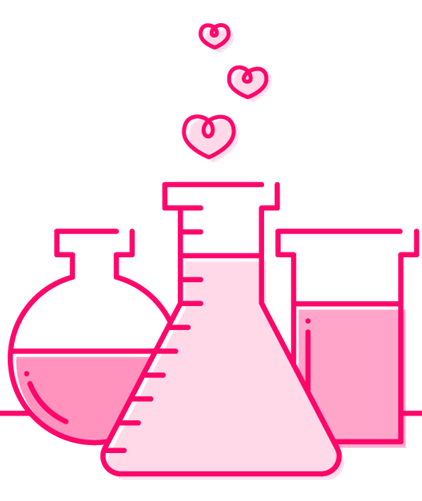|
|
|
|
|
|

|
Kindness is about more than simply being nice, polite, or friendly, although those things contribute to the overall power of kindness. Kindness is about treating those around you with genuine care, compassion, concern, and acceptance. Sometimes kindness is mistakenly associated with naivety or weakness, which can cause some people – including image-conscious teenagers, to try to avoid being labeled as kind.
But kindness isn‘t a weakness. In fact, demonstrating kindness can sometimes require real bravery and strength of character. Often times it takes courage to be kind.
|
|
|
|
|
|
|
Kindness is a valuable interpersonal skill with many benefits. It‘s not just the recipients of kindness who benefit, people who practice kindness also experience many advantages.
Kindness increases:
|
|
|
|
 |
The Love Hormone:
Witnessing acts of kindness produces oxytocin, occassionally referred to as the ’love hormone‘ which aids in lowering blood pressure and improving overall heart health. Oxytocin also increases self esteem and optimism which is particularly helpful for individuals that feel anxious or shy in social settings.
Energy:
About half of participants in one study at UC Berkeley, reported that they felt stronger and more energetic after helping others; many also reported feeling calmer and less depressed, with increased feelings of self worth.
Happiness:
A 2010 Harvard School of Business survey of happiness in 136 countries found that people who are altrutistic – in this case, people who were generous financially, such as with charitable donations – were happiest overall.
Lifespan:
People who volunteer tend to experience fewer aches and pains. Giving help to others protects overall health twice as much as aspirin protects against heart disease. People 55 and older who volunteerfor two or more organizations have an impressive 44% lower likelihodd of dying early, and that‘s after other contributing factors such as physical health, exercise, gender, smoking and marital status are taken into account.
|
| |
|
|
|
|
|
|
|
This video highlights a UC Berkeley Professor and his breakthrough research on the science of kindness and compassion.
|
|
|
|
|
|
|
 | 1. Makes us happier
2. Is good for the heart
3. Slows aging
4. Improves relationships
5. Is contagious
Author: Dr. David Hamilton

|
|
|
|
|
|
|
Happier Adolescents
It's proven that kindness and giving act like a natural anti-depressant because they release serotonin in the brain. Serotonin plays an important part in learning, memory, mood, sleep, health and digestion. It provides individuals with a heightened sense of well-being, increases energy and gives wonderful feelings of positivity and self worth.
|

|
|
|

|
Increased Self-Esteem
Researchers found that being kind benefits givers by not only improving well-being but also popularity. The study succeeded in increasing both happiness and peer acceptance among pre-adolescents through a simple activity. As peer acceptance is important among youth, being well liked also increases feelings of self-esteem and inclusion. The study also concluded that students who are happy and well-liked by classmates exhibit more inclusive behaviours and less externalizing behaviours such as bullying.
|
|
|
|
|
|
Better Physical Health
Acts of kindness are often accompanied by emotional warmth which produces the hormone oxytocin in the brain and throughout the body.
Oxytocin causes the release of a chemical called nitric oxide in blood vessels, which expands the blood vessels and reduces blood pressure. For this reason oxytocin is known as a ’cardioprotective‘ hormone. Therefore it can be said that kindness protects the heart.
|
Less stress, anxiety and depression
Because kindness produces feel-good emotions that make people happy it can be seen as a natural antidote to stress, anxiety and even depression. Science explains it as an increase in parasympathetic activity which allows the body to relax and regenerate.
|
Less Narcissism
Some studies suggest that today's generation of teens are more narcissistic than in previous times. Experts say that self-absorbed behaviour can be curbed through kindness activities that teach teens to care and see another's perspective. Adolescents who learn to be givers in a world where they're conditioned to take, are less likely to catch the "it's all about me" attitude.
|
| |
|
|
|
|
|
|
|
One of the most effective ways to teach your teens about the power of kindness is to teach by example. Adults often believe that their teenage children aren’t listening to them, but they observe quite a bit, even when they don’t seem to be paying attention. And there’s just no substitute for learning from a good role model.
Let your teens catch you in the act of being kind as often as possible. This doesn’t always have to mean taking big actions -small kindnesses are important as well:
|

|
|
|
 |
Give someone the benefit of the doubt
Smile at a stranger
Share something with someone
Offer to help a neighbor with a bulky package
Hold a door open for the person behind you
Give a sincere compliment without expecting anything in return
If you can, give a server a larger than normal tip, just because
|
|
|
|
All of these things add up, and when your teen sees their role models consistently practicing kindness, they’ll pick up the habit as well.
|
| |
|
|
|
|
|

| Challenge your teens to perform at least one act of kindness every day for a month. Ask them to keep a journal where they write what they did and how it made them feel, or other relevant information. You may want to participate along with them.
Once a week check in with your teens about how their challenge is going. Ask them to share their favorite acts of kindness, their most challenging acts of kindness or any other interesting stories they may have.
|
|
|
At the end of the month, talk about how they felt about the project as a whole:
|
|
|
What did they think about the challenge at the beginning of the month?
How did that change (if it did change) by the end of the month? | Will they maintain the habit of performing daily acts of kindness going forward?
How will they do that?
|
|
|
|
You may be surprised by how much your teen can learn with just a few weeks of intentionally looking for opportunities to practice kindness. Teenagers may very well surprise themselves both with their capacity for kindness and with how positively they’re affected by performing kind acts for others.
|
| |
|
|
|
|
|
Lateral violence is displaced violence directed against one's peers rather than adversaries. This is one way of explaining minority-on-minority violence in developed nations. Lateral violence manifests in unique ways for Indigenous people because of the impacts of colonization, racism, and intergenerational trauma.
|

|
|
|
Lateral kindness works to address and end the lateral violence in the workplace, families and communities as a public health issue impacting individual mental, physical, emotional and spiritual health.
The Lateral Kindness Gram is a resource developed by the First Nations Health Directors Association. It is based on Indigenous values that promote social harmony and healthy relationships. Using the Lateral Kindness Gram, individuals can recognize a client, peer, friend, family member or an acquaintance for their positive attitude at work, their contributions to the team, or the work they do in helping the community.
|
|
|
|
|
|
|

|
Teens have big emotions and often big ideas, and a teen who has discovered the power of small acts of kindness might be looking for an opportunity to practice kindness on a grander scale.
For example, a teen who has volunteered at a homeless shelter might come away from the experience with a desire to end homelessness or hunger in their city. This is a good instinct!
Unfortunately, teens sometimes get discouraged when adults tell them that an idea is too big for them, or when they have no idea how to implement it. Empower your teen to find a way to do what they’re seeking to do.
|
|
|
|
A teen who is seeking to end homelessness may not be able to do so single-handedly. But they can brainstorm possible solutions, they can research what has worked in other areas, they can lobby their elected officials, they can crowdfund, and they rally others to the cause.
What a teenager with a big idea needs from the adults in their lives is guidance, support, and empowerment.
|

|
| |
|
|
|
|
|
Introduce your teen to examples of other young people who have accomplished big things in the spirit of kindness.
Great examples include Mari Copeny, who has been fundraising and raising awareness in an effort to bring clean water to her hometown of Flint for years, or the teen survivors of the Marjory Stoneman Douglas High School shooting in Florida who turned their grief into political action to end gun violence.
At the heart of these and other activism efforts is kindness – a desire to help others and prevent or alleviate suffering – and that kindness is powerful enough to enable very young people to have a very big impact on the world around them.
You can help empower your teen to use their instinct for kindness in powerful ways as well.
|
|
|
|
|
|
|
|
|

| Just as important as it is to be kind to others, it‘s equally important to practice kindness towards yourself. This is often referred to as self compassion.
Self-compassion entails being warm and understanding toward ourselves when we suffer, fail, or feel inadequate, rather than ignoring our pain or belittling ourselves with self-criticism
|
|
|
|
Forgiving and nurturing yourself can set the stage for better health and relationships. It can also lower levels of anxiety and depression as self-compassionate people are kind to themselves when they are suffering, which reduces their anxiety and related depression.
|
| |
|
|
Help your teens to integrate self compassion into their everyday routines so they continue the practice into adulthood. They can do that by being kind to their own bodies, demonstrating grit, standing up for themselves, maintaining life balance and speaking to themselves like they would to their best friend.
|

|
| |
|
|
|
|
|
The poster contest below has been distributed to all of our schools. However if your teen's school is not participating in the contest they may produce a poster at home and submit to win the same prizes! Posters will be chosen from elementary, middle and secondary.
|
|
|
|
|
|
|
|
|

|
Several copies of this poster have been delivered to all secondary schools for student learning.
The goal is to remind students that we all have the capacity to be kind and that kindness has the power to change lives!
|
|
|
|
|
|
|
Calling parents and youth in BC! The MyHEARTSMAP team needs your help to measure how much and in what ways the changes in our lives during the pandemic have affected the social and psychological wellness of our children and youth. Learning about our children's needs will help guide our provincial mental health resource planning.
CLICK HERE to read more or participate in the study.
|
|
|
|
|
|
|
|
|
|
What do you think was the most popular Snapshot of 2020?
A. Anxiety and Depression
B. Resolving Family Conflict
C. Wellness Tools
D. Social Media Safety

|
| |
|
|
|
|
|

|
Do you enjoy the monthly Snapshots?
Do you have suggestions on how to improve the Snapshots?
Do you have ideas for future topics?
Let us know!
We would love to hear from you!

|
|
|
|
|
|
|
|
|
|
|
|
|